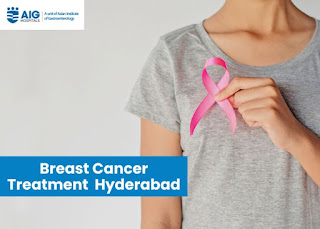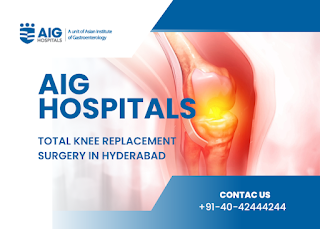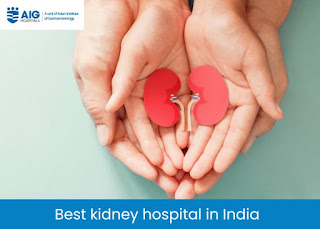Breast Cancer Hospital In Hyderabad
Breast cancer is the most common cancer in women worldwide. It is the second leading cause of cancer death after lung cancer in developed countries. 1.67 million new cases are diagnosed each year. In less developed regions of the world, it is the most frequent cause of death from cancer. The incidence of breast cancer increases with age, but no age is immune. It is however extremely rare before puberty.
Breast
cancer screening and detection
Regular screening with mammogram and ultrasound starting from
the age of 40, will help detect the disease at an early stage, thereby
improving the chances of cure.
Breast
cancer symptoms
The most common symptom is the finding of a lump in the breast.
It is usually painless but sometimes, it may be associated with pain. Other
symptoms are watery or bloody nipple discharge. Some people may also have a
lump in the armpit.
Breast
cancer diagnosis
It is important to consult a doctor who will determine whether
the lump is cancerous or not. Most of the breast lumps are benign, however it
is important not to miss the ones that are cancerous. For this a triple
assessment is done which consists of clinical examination of the lump, imaging
with ultrasound and mammogram and a needle biopsy of the lump. This will give
the diagnosis most of the time. Occasionally, there may be a discordance
between the imaging and biopsy findings, or the biopsy may be inconclusive. In
such cases, the lump needs to be removed by surgery in order to establish the
diagnosis.
Once a diagnosis of cancer is made, the next step is to
determine the stage of the disease, that is, to determine whether the cancer
has spread to other organs or not. For this, certain blood tests, an ultrasound
of the abdomen, a chest X-ray and a bone scan are done. In some patients, a PET-CT
is done to determine the stage.
Types
of breast cancer
Breast cancer is not a single entity. There are several subtypes
in it. The types of breast cancer are determined by performing IHC
(Immunohistochemistry) studies on the needle biopsy specimen.
Broadly, they are divided into:
1.
ER/PR (Estrogen and progesterone receptor) positive
2.
ER/PR negative
3.
HER2 enriched
4.
Triple negative breast cancers
Breast
cancer treatment
Breast cancer treatment depends on several factors such as stage
of the disease, age of the patient, medical co-morbidities and the patient’s
desire to retain the breast.
·
Breast cancer surgery –
In early breast cancer, surgery is performed first. Surgery involves removal of
the primary tumor in the breast and removal of lymph nodes in the axilla.
Broadly, surgery is of 2 types. One involves removal of the entire breast. The
second involves removal of the tumor with adequate margins. Breast
reconstruction can be done either at the same time or at a later date,
depending on patient preference. Surgery on the axilla involves either axillary
dissection or a sentinel node biopsy.
·
Sentinel node biopsy for
breast cancer – In this technique, a dye is injected around the areola
and traced with a probe to the axilla. There the first node to which the dye
reaches, is identified with the help of a special equipment. This node is known
as the sentinel node which means the first node to which cancer cells spread
from the tumor in the breast. That particular node is excised and sent for
frozen section biopsy. If no cancer cells are identified in the sentinel node,
a full axillary dissection can be avoided. This will prevent the consequences
of axillary dissection which include – chronic shoulder pain, decreased range
of shoulder motility and lymphedema (i.e., swelling) of the upper limb.
After
surgery, drains are placed which remain in place for a week to 10 days.
Patients are usually discharged in 1 -2 days.
·
Chemotherapy for breast
cancer – In some patients, when the tumor is large and the
patient wishes to retain her breast, chemotherapy is given first to reduce the
size of the tumor and make breast conservation possible. In stage 3 breast
cancer, especially when the woman is young or when the hormone receptor status
is negative, chemotherapy is given first. The exact treatment planning is done
by a multidisciplinary team consisting of surgical, medical and radiation
oncologists.
·
Adjuvant therapy for
breast cancer – Adjuvant therapy i.e., treatment after surgery – is
given in the form of chemotherapy, endocrine therapy, radiation and targeted
therapy.
·
Advanced breast cancer
treatment – Treatment for stage IV disease – The purpose of
treatment in stage IV breast cancer is to alleviate symptoms, prolong life and
improve the quality of life. Treatment decisions are based on disease burden,
hormone receptor status and symptoms. For hormone receptor negative patients,
chemotherapy is given. For ER/PR positive tumors, endocrine therapy is the
initial treatment with chemotherapy reserved for second line and third line
treatment. For Her2 positive tumors, targeted therapy with monoclonal
antibodies, such as trastuzumab forms a major part of the treatment protocol.
Radiation is given to control pain and to decrease tumor burden in specific
circumstances. Long term survival can be achieved in patients with stage IV
disease with combination of therapies.
At Asian Institute of Gastroenterology (AIG),
we focus on precision cancer care and treatment regimens based on every
patient’s needs focusing on the right treatment plan based on various factors
to provide the best breast cancer
treatment hyderabad. Our best team of breast cancer specialists in
Hyderabad, who altogether decides on treatment plans along with the advanced
technologies to offer our patients, cancer care with better treatment outcomes
minimum possible side effects.
AIG is one of the best cancer
hospital in hyderabad to offer a standard and multi-disciplinary approach,
with high-end technology and commitment.




Comments
Post a Comment